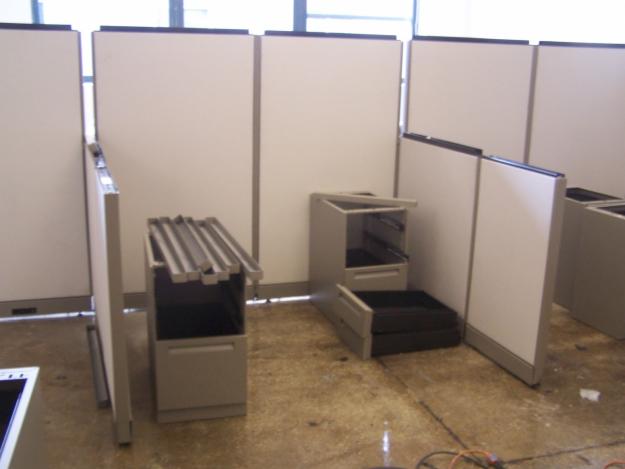When negotiating your commercial office lease, the Tenant Improvement Work Letter (TI) covers the design and construction work required to build and fit out the space. The TI can be structured in many ways but ultimately it’s up to the tenant to decide if they or the landlord are responsible for managing the design and construction process.
There is no right or wrong answer. Rather, the decision will be based on many factors including the complexity and cost of the build-out, the TI allowance, the level of project control the tenant requires, and the available time to commit to managing the process. Quick tip: A project management firm is crucial to guiding company’s through the construction options. They are well versed in the company’s requirements and can advise the best options based on the needs of the firm.
Landlord Build-Out Option – Landlord’s often provide architectural and construction Build-Out services as part of the TI. The landlord will define a “Building Standard” package which outlines the number of electrical outlets per foot, standard grades and colors of carpeting, styles of doors, type of lighting and numbers of fixtures, window treatments, inclusion of door sidelights, style of ceiling, amount of drywall and grade of paint, etc. The quality of a landlord’s “Building Standard” often varies by class of building, financial health of the landlord and attractiveness of the rent. Anything above building standard such as better grades of carpet or additional outlets is negotiated at an additional cost.
This is a popular choice with tenants, and with good reason. The landlord provides the tenant with a turn-key process. They hire an architect to help design the space, a general contractor to construct the office and they assume the risk of overruns unless you change the agreed upon improvements. It’s like going to a restaurant for a prix-fixe meal. You get what’s on the menu. If you want something better, you pay for the difference or arrange for your own contractors to come in and do the job, if the building permits. The landlord, though, will incorporate a 25-30% contingency fee into the cost of construction to prevent the cost from exceeding their construction estimate. If the landlord comes in under budget, the tenant has given up that portion which could have gone towards other improvements. If they come in over budget, they may cut corners. A landlord does not have the time and often the expertise to assure that a project is well-managed from design through project closeout.
Where the landlord is responsible for the build-out, the tenant will have three primary concerns: (a) getting the most work it can out of the landlord, (b) getting the landlord to stand behind its work with some sort of warranty obligation, and (c) achieving completion by a specified date.
Where tenants often lack foresight with the landlord build-out is believing the landlord’s design and construction team are working for their best interests. While the landlord’s team is well-intentioned, the tenant is really a bystander with little control over the process once construction starts. The design and construction team answers only to the landlord and not the tenant. For this reason, the tenant needs to be fully versed in understanding and monitoring every phase of the planning including correlating TI work to every page and every symbol of the Construction Drawings (CDs) to ensure all items in the TI were captured and transferred to the plans. Items are often missed, forgotten or not thought of during the TI negotiation and only a savvy tenant or their project manager will figure this before the CD’s are issued for permitting.
You don’t want to find out too late that your conference room really should have power and data to the center of the table and not realizing it requires a core drill which is an expensive Change Order. The tenant or their project manager should be on site frequently to monitor that their space is being built per plan. Problems not foreseen during the design phase can appear during construction and the tenant or their project manager needs to know how to address them. The tenant’s vendors also need to be worked into the GC’s project plan.
Often the architect is contracted by the landlord for just a few site visits so it’s incumbent upon the tenant’s team to catch issues before they become problematic.
Tenant Build-Out Option –This option shifts complete control of the build-out to the tenant who will have a higher level of engagement toward making sure that the space is built exactly as they need and expect. The tenant contracts directly with the architect, MEP (Mechanical, Engineering and Plumbing) engineer and general contractor. Many decisions will be made throughout the process, but the tenant has direct control over the general contractor and trades.
It is highly advisable to retain a project management firm to help issue RFP’s for architects, engineers and general contractor’s, level bids while overseeing the process as the tenant’s “Owner’s Rep” or “Tenant Rep Project Manager”. They will typically capture savings that far exceed the fees they charge.
The architect will design the tenants plans that will include all information necessary to price and construct the project. The landlord will review the plans and provide comments and recommendations. The architect and the general contractor will develop a construction schedule that identifies each phase of construction that allows for effective planning and coordination. Work that could potentially impact building services or other tenants like a conference room core drill must be coordinated with the landlord.
Adequate time should be allowed in the schedule for the permit process. The landlord has no obligation in this process, except to ensure that a proper permit has been obtained prior to the commencement of any work.
Both Options – The contractor is responsible for construction, the punchlist and project close-out. Throughout the construction process, the architect is responsible for updating drawings incorporating all changes, as they occur, into the original plans and submitting copies to the appropriate parties. The tenant, the project manager and architect should conduct field inspections of the construction process to ensure that the contractor is not deviating from the approved plans.
Prior to occupancy, the tenant and architect develop a list of incomplete architectural items, problems or deficiencies that are submitted to the contractor for repair.
Given the numerous tasks, the tenant’s selection of vendors can be extremely time-consuming. The tenant contracts directly with communication equipment vendors, furniture systems, and security. The tenant should begin its selection process very early in the design phase so that special requirements can be incorporated in the space plan.
During construction it is important to hold weekly meetings and create action item lists and agendas. The General Contractor should have a tight grasp on the progress of the sub-contractors and the schedule. The project architect and General Contractor must work together to ensure this is being provided.
Discover more from Helping NYC & Long Island Commercial Tenants, Owners, and Developers
Subscribe to get the latest posts sent to your email.





